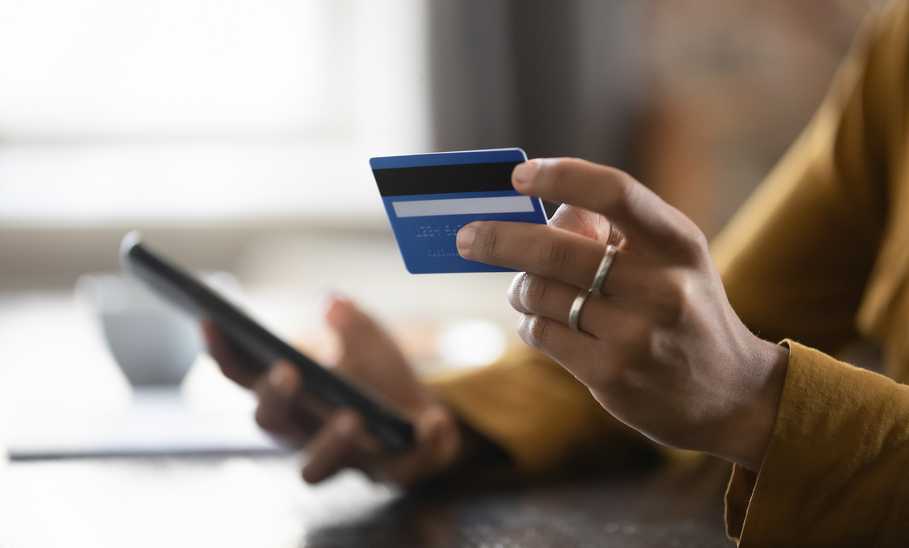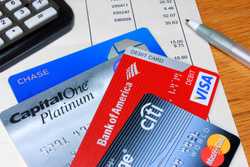Should I Sign My Credit Card

Our evaluations and opinions are not influenced by our advertising relationships, but we may earn a commission from our partners’ links. This content is created by TIME Stamped, under TIME’s direction and produced in accordance with TIME’s editorial guidelines and overseen by TIME’s editorial staff. Learn more about it.
On the back of every credit card is a stripe where your signature is meant to go. If you’re like most credit cardholders, that signature panel is blank.
Do you have to sign the back of your credit card? And if not, should you do it anyway? Most of your purchases are probably online, which doesn’t require a signature. In short, you don’t have to. It’s true that some credit cards have language saying that your card is invalid without a signature, but that doesn’t stop the card from working.
That said, individual merchants can refuse to take your credit card if it’s not signed. Even though there’s no actual law against a blank signature panel, merchants have the right to demand it. Let’s take a look at why credit card signature panels exist in the first place and why you should sign your card.
Invest in identity theft protection with Identity Guard — not just to secure your credit cards but to protect your entire financial profile.
Signing your credit card is perfectly safe. In fact, it’s safer than not signing. Presumably, your fear is that:
The truth is that signatures aren’t that terribly important anymore for those trying to commit fraud. In an ideal world, those approving your payment would verify signatures, but the diligence just isn’t there. I have successfully drawn a stick figure family on the signature line of the credit card machine and had no problem completing my purchase.
Instead, your signature serves as an additional layer of defense if you find that your credit card is being used by a fraudster. For example, if someone retrieves your credit card information from a skimmer, they can then clone your card onto a blank card and use it as their own. If they don’t know your signature, you could potentially reach out to merchants where your card was used and retrieve the signature penned by the thief to strengthen your claim of fraud.
In the past it was standard practice for credit cards to carry a warning on the back saying “not valid without authorized signature.” This was because all credit card companies wanted merchants to verify a customer’s signature before making a sale. Doing so helped vendors to dispute chargebacks submitted by customers claiming to be a victim of fraud. A signature match on items the customer claimed never to have purchased helped them to protect themselves.
These days, however, most purchases, even in-person ones, don’t require the customer’s signature, so that language is no longer ubiquitous. Nevertheless, be it Mastercard, Visa, or American Express, some cards still have that phrase on the back of the card. One example is the card_name. American Express, however, no longer requires merchants to collect signatures at checkout, so you won’t see that language on any of its charge cards or credit cards.
In short, you can use your credit card without signing the back. However, should a merchant ask to see your signature, and it’s not there, they may ask you to sign the card and then present other identification containing your signature to prove that you are you. This rarely happens, but it could, so it’s best to sign all of your cards.
Debit cards tend to carry the “not valid without authorized signature” label more than credit cards. As individual merchants can also decline your debit-card purchase if your card isn’t signed, it’s better to sign it, as well.
Writing “See ID” on your signature line is a practice that obliges the individual taking your credit card for payment to solicit you for identification. The theory is that, if your card is stolen, this will disincentivize the thief from using it in person. However, this isn’t as effective as it once was because the need to actually hand your card to another person at the point of sale is becoming rarer and rarer.
You’re welcome to write “See ID” on the back of your card as a small additional layer of security, but you should also write your signature. A merchant may decide that your card is invalid if your signature panel says “See ID” instead of your name.
Technology has advanced infinitely since the invention of credit cards, and both credit cards and fraudsters have evolved as a result. Signatures and “See ID” notes on the back of your card aren’t likely to foil the plans of a thief who’s good at what they do.
Nowadays, most credit cards are equipped with EMV chips in addition to magnetic stripes. EMV chips create a one-of-a-kind key for each payment. This makes it extremely difficult for someone to swipe your card’s payment power because the key that completed the transaction becomes invalid immediately after use.
In the same vein is the increasing popularity of virtual credit cards. These can be used through virtual wallets both in a store and online. It acts as a third party between the merchant and your credit card, allowing you to buy things without ever entering your credit card information.
Many online purchases come with their own security features. Some offer multiple-stage checkout processes that involve texts to your phone, authentication apps, or other two-factor authentication strategies.
Here are a few practical, easy steps you can take to minimize your chances of being a victim of credit card fraud.
It’s wise to scan your credit card transactions each month for discrepancies. If you don’t recognize a charge, report it immediately to ensure that you’re not on the hook for the purchase amount. Additionally, you can get credit card notifications on your cellphone, so you immediately see when there has been a charge to your card. Scrutinize them as they come in, and you can catch fraud as it happens.
Combing through your monthly statement is a good practice even for those not worried about fraud. You’ll catch things such as accidental double charges, missed payments, or other honest mistakes that could affect your financial health.
If you’re looking to use your credit card with a company you’ve never heard of, take a few seconds to google its reputation and scrutinize its url. If the website is “http” instead of “https”, it’s probably better to find what you’re looking for elsewhere. The “S” stands for “secure.” In short, it helps to keep your information safe.
An obvious tip to maintaining your credit card security is to keep your cards in a safe place. This isn’t as much of a no-brainer as you might think. It’s a mantra to live by at all times. Don’t carry around credit cards that you don’t often use. When you’re at a restaurant, don’t leave your card on the table. If a friend asks to borrow your credit card, decline politely and give them cash instead.
It seems that no matter how cautious you are, you’ll probably find unauthorized charges on your credit card from time to time. These can originate with data breaches, high-risk transactions, and similar activities. etc. Today’s crooks are really good at getting your info. This is why it could be worthwhile to invest in identity theft protection, such as you get from a service like Identity Guard—not just to secure your credit cards but to protect your entire financial profile.
Protections you get from Identity Guard include $1 million in identity theft insurance, data breach notifications, and dark web monitoring. Your internet browser will also receive tools that make surfing more secure. Depending on the tier of service you buy, you can also receive monitoring at all three credit bureaus. This is important, because suspicious activity may only be reported to a single bureau.
Signing the back of your credit card was once a good security measure. Nowadays, it’s very unlikely to prevent fraud from occurring. However, merchants can decline your card if it’s not signed. They probably won’t, but it’s best to sign it.
A signature panel code exists in—you guessed it—the signature panel on the back of your credit card. It’s three or four digits that are required to make purchases online. A signature panel code is filled out after you enter your credit card number and expiration date. Notably, while American Express cards also provide a three-digit code on the back, the code you’ll need to enter online is on the front, near the top right of the card, and it contains four digits.
The best pen to sign the back of a credit card is a felt tip. Ballpoint pens tend to smudge, as the ink doesn’t adhere to the material as well.
Spotting fraudulent activity requires diligently examining your monthly statement or closely monitoring individual credit card notifications on your cellphone. Your credit card issuer will try to keep fraud at bay, but it’s ultimately your responsibility. You can also opt to pay for a membership with an identity theft protection provider. It can do a lot of the legwork for you, as well as plenty of things you can’t do, such as monitor the dark web.
The information presented here is created by TIME Stamped and overseen by TIME editorial staff. To learn more, see our About Us page.



